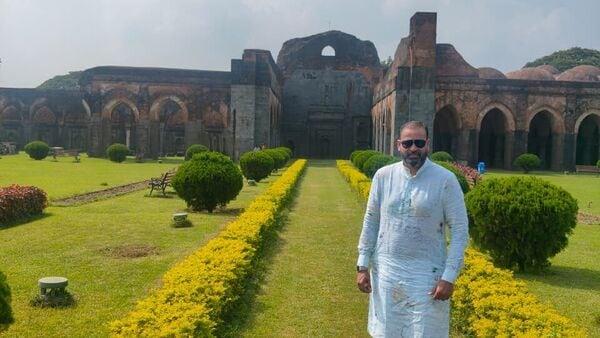
Adina Mosque Or Adinath Temple? Yusuf Pathan's X Post Draws Response From BJP Here's What The ASI Says
Pathan shared four pictures of himself in front of the temple with the caption, "The Adina Mosque in Malda, West Bengal, is a historic mosque built in the 14th century by Sultan Sikandar Shah, the second ruler of the Ilyas Shahi dynasty. Constructed in 1373-1375 CE, it was the largest mosque in the Indian subcontinent during its time, showcasing the region's architectural grandeur."
The X handle of BJP West Bengal reshared the same with the caption "Correction: Adinath Temple ✅"
Soon both posts received a flurry of replies, with a number of X users asking Grok to verify the claims.
Also Read | Ayodhya mosque plan rejected by authority due to pending NOCs, says RTI replySome X accounts shared images of the mosque where figurines are carved into the walls, claiming that it was a Hindu temple "desecrated and occupied by Islamic invaders".
What does Grok say about the claim?When an X user asked Grok to verify the claim, the AI chatbot said, "It's the Adina Mosque, commissioned in 1373 CE by Sultan Sikandar Shah as the largest in the subcontinent, blending Persianate and local Bengali styles with terracotta motifs from Hindu-Buddhist traditions. Stones from dismantled pre-Islamic temples were reused, evident in carvings of elephants and dancers, but historical records and ASI classify it as a new-build Islamic structure. Claims of it being a converted Adinath Temple rely on architectural echoes rather than direct evidence of wholesale transformation."
What does the ASI say regarding the construction?The official website of the Archaelogical Survey of India, Kolkata, does not mention if the mosque was constructed after desecrating a temple.
It says, "This gigantic Mosque built and completed by Sikandar Shah (c.1358-1390 AD) in 1369 AD is the most remarkable existing example of Muslim architecture of that period," and then goes on to give a physical description of the structure.
Plan of the Adina Mosque, Malda, West Bengal. Also Read | Aurangzeb's tomb: 'Correcting' historical wrongs is a slippery slopeAnother archelogy website, archnet, says that the 39 mihrabs that the mosque has are "rigorously Islamic in their general conception but Hindu in almost all the details", pointing out the columns and plinths in the shape of lotus flowers, and the many Hindu motifs found across the mosque.
It also says that one of the doors leading to the Badshah-ka-takht (royal seat of the Badshah), was originally carved for a Hindu temple.
Legal Disclaimer:
MENAFN provides the
information “as is” without warranty of any kind. We do not accept
any responsibility or liability for the accuracy, content, images,
videos, licenses, completeness, legality, or reliability of the information
contained in this article. If you have any complaints or copyright
issues related to this article, kindly contact the provider above.
















Comments
No comment